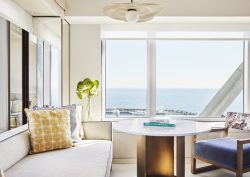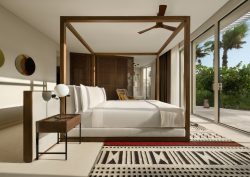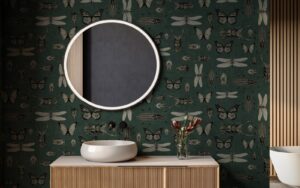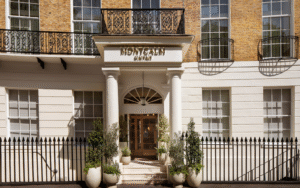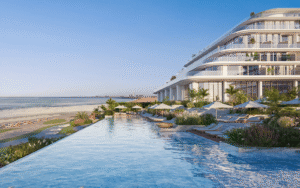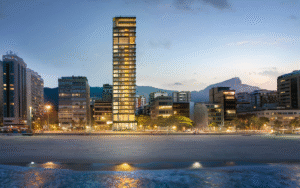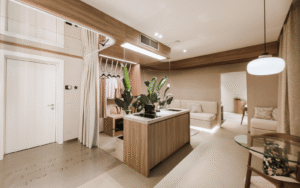For Hotel Designs’ final roundtable in 2023, Editor Hamish Kilburn led a discussion, sponsored by Kohler, with leading interior designers that explored a new direction in bathroom design…
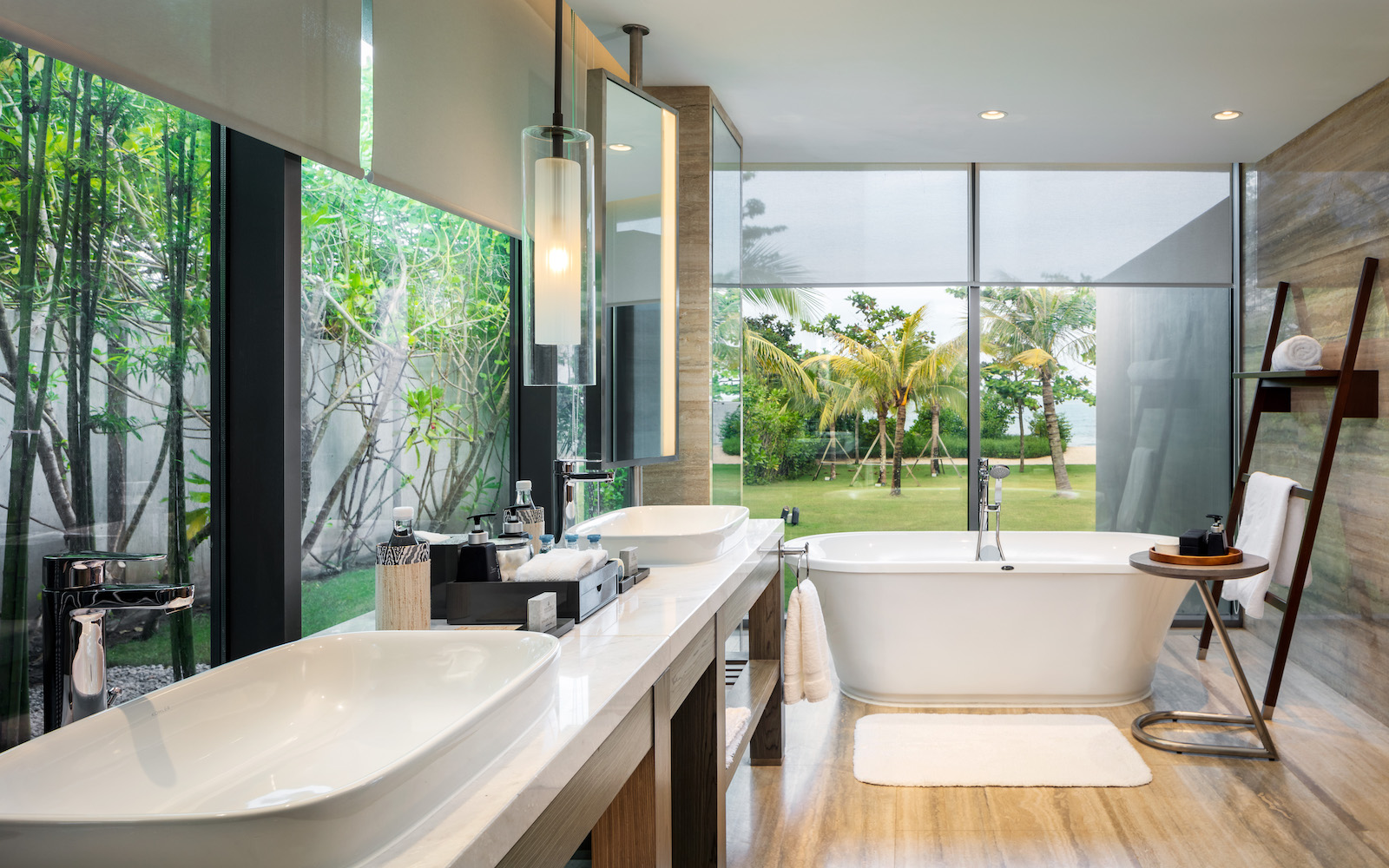
Some of the most innovative creative solutions in the hotel design arena emerge when the interior designer is restricted by budget and regulations. There is arguably no more challenging of an environment in the hotel to add personality and flair than in the bathrooms, which serve a very functional purpose.
Following conversations Hotel Designs initially sparked years ago, to see bathrooms beyond practical spaces, it felt like an apt time to bring together members of the hotel design community to discuss key bathroom trends and how designers are making the bathroom the hero.
On the panel sponsored by Kohler:
- Corinna Galdies, Director, G.A Group
- Tom Thorogood, Co-Head of Interiors, Studio Moren
- Dimos Giorgou, Studio Director, Tara Bernard & Partners
- Fiona Thompson, Principal, Richmond International
- Sophie Borel, Projects Planning and Design Manager, Cheval Collection
- Mark Henderson, Vice President of Technical Services, YOTEL
- Henning Schmidt, Regional Director Design & Technical Services EMEA, Six Senses Hotels, Resorts & Spas
- Kevin Miles, Key Account Manager UK Global Projects & Specifications, Kohler
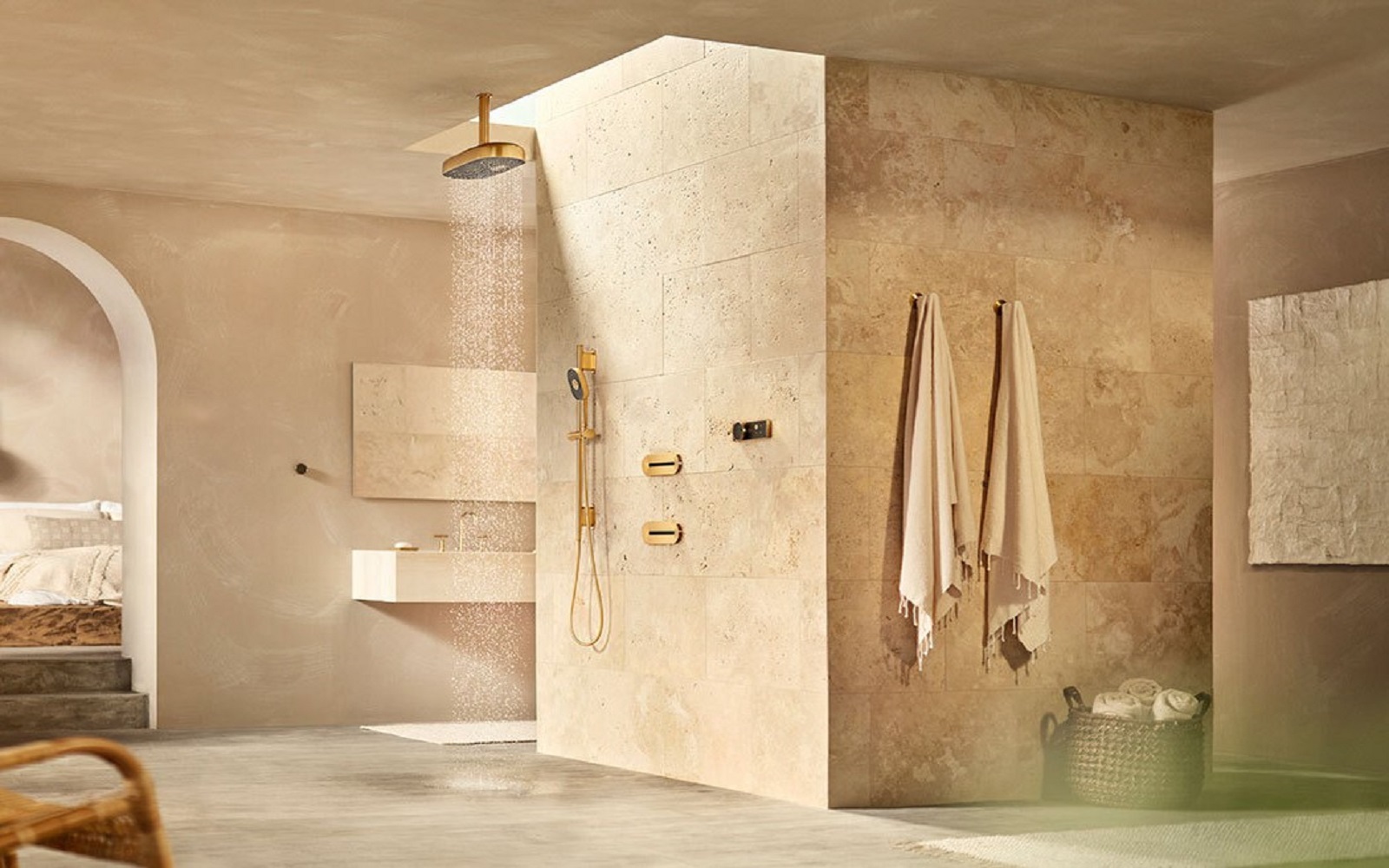
Image credit: Kohler
Hamish Kilburn: How are you seeing the bathroom and bedroom, in hotels specifically, merging in a way that remains practical?
Henning Schmidt: In our properties, certainly, we need to have the merging element between the bathroom and the bedroom. There are some constraints to consider, though, plus we need to be mindful of the guest experience. From a luxury perspective, in our properties, we like to keep things separate but perhaps use the same surfaces materials so that the spaces share a design language.
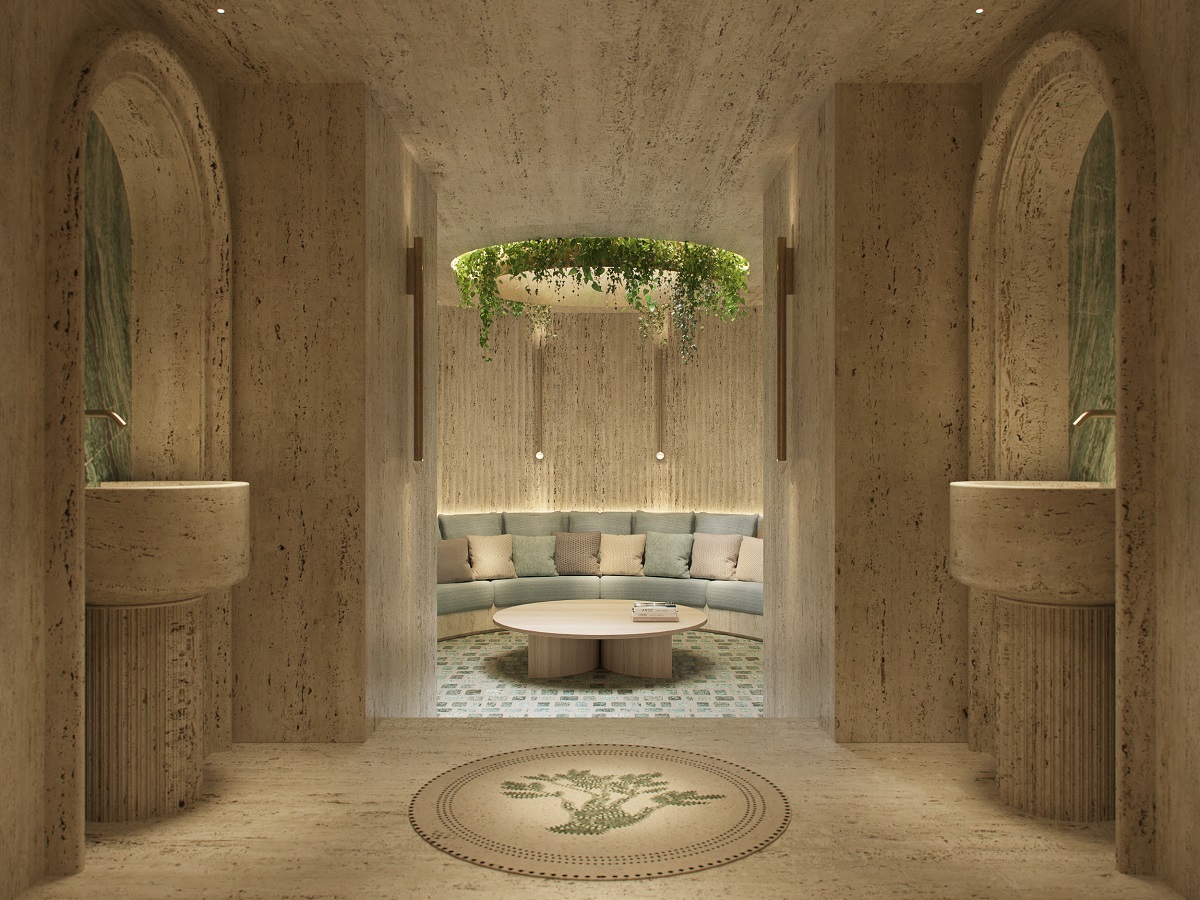
Image credit: Six Senses
Dimos Giorgou: There are so many things to consider, such as the location, the building itself and the overall design scheme. We are using a lot more glass and sliding doors between spaces, which is also a nice way to open up the space. Some brands like to have an open feel in the bathroom. I would say, in urban hotels, there is more of a desire to close these areas off to create more privacy.
Tom Thorogood: In specific hotel categories like lifestyle and resort hotels, there’s a growing trend towards open-concept bathrooms. However, the necessity for privacy remains paramount. This balance is gracefully achieved through the use of dynamic elements like moving screens, sliding doors, or even creatively obscured glazing options. These features provide seclusion without sacrificing the open, airy feel of the space.
The fusion of the bedroom and bathroom areas is further enhanced by a seamless transition in design elements. This includes a consistent approach to floor finishes, colour schemes, and artwork, along with a similar level of personalisation in both areas. Such continuity not only creates a visually appealing space but also ensures a harmonious and luxurious guest experience.
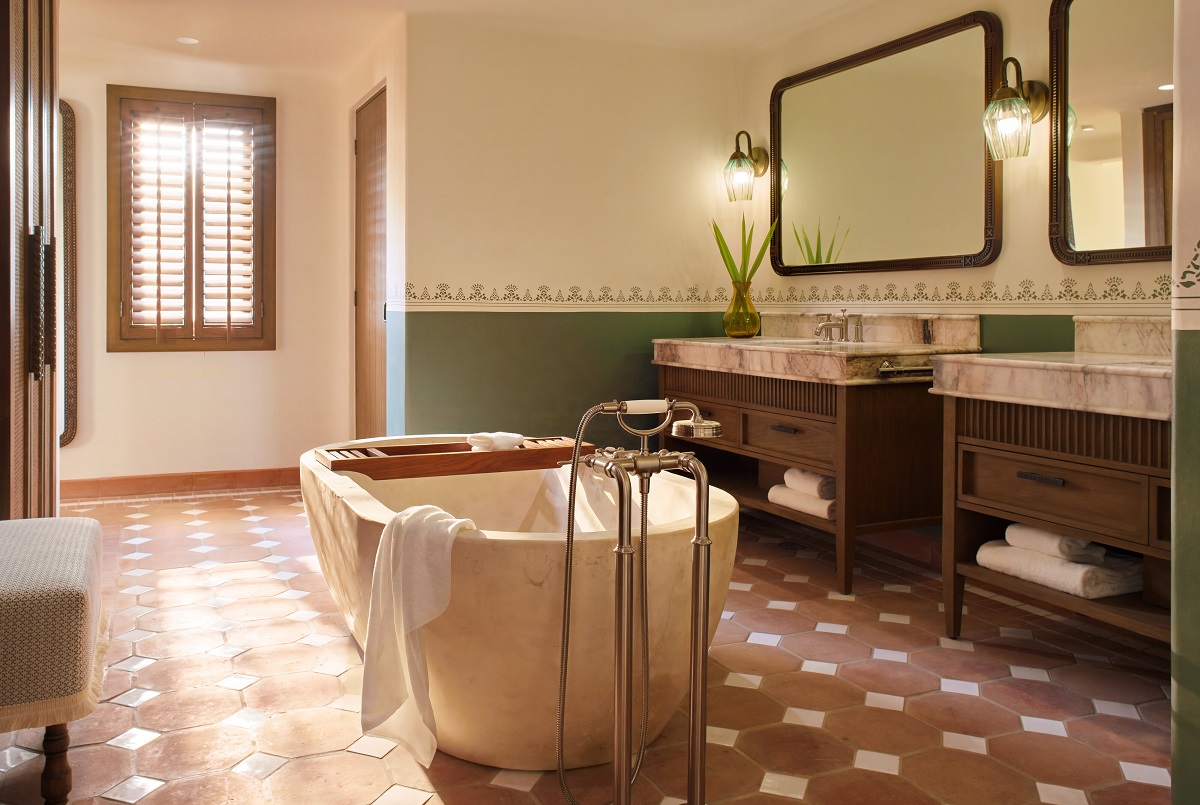
Image caption: The bathroom inside Maroma, a Belmond Hotel, designed by Maroma, a Belmond Hotel, designed by Tara Bernerd & partners. | Image credit: Belmond
We are building a hotel in Tokyo and we are really having to present ways to amplify the space. We are working on ways to connect both the bathroom and bedroom in a practical way so that the space feels larger.
Sophie Borel: More and more, these days, we have less space to play with. Another challenge is designing to suit demographics. Geographically, guests in the Middle East will require something different from guests in Europe.
-
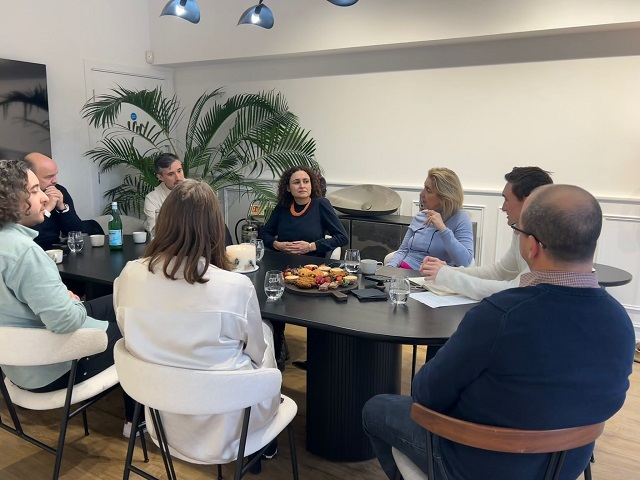
- Image caption: The roundtable discussion was captured inside Kohler’s Clerkenwell showroom. | Image credit: Kohler
-
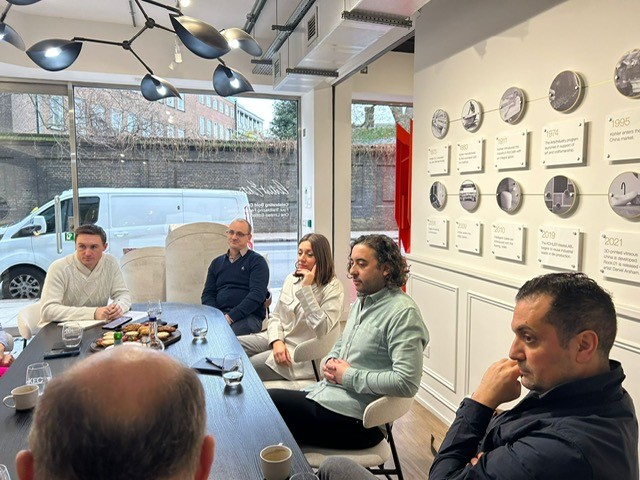
- Image caption: The designers debated tech’s role in bathroom design as well as the idea of merging spaces between bathroom and bedroom. | Image credit: Kohler
Hamish Kilburn: I think with this topic we can get stuck in luxury. How are brands like YOTEL enhancing the bathroom?
Mark Henderson: I have seen the public’s general knowledge around specification, construction and design increase – you just have to scroll through social media to see people doing their own home renovations. People know a quality brand. If you don’t get the basics right in hotel design then you will not meet just the basic expectation from modern travellers. For a brand like YOTEL, guests staying with us are business travellers who expect quality products.

Image caption: A bathroom inside YOTEL Geneva Lake. | Image credit: YOTEL
Hamish Kilburn: One of my biggest bugbears is seeing a quality brand that has been specified but the product performing terribly. As designers, how can this be rectified?
MH: That’s part of our battle and why we develop our own standards in-house. We make sure that the brands we work with are on board with not just getting to opening stages. Ensuring brands are part of the conversation around operations, maintenance and aftercare is essential.
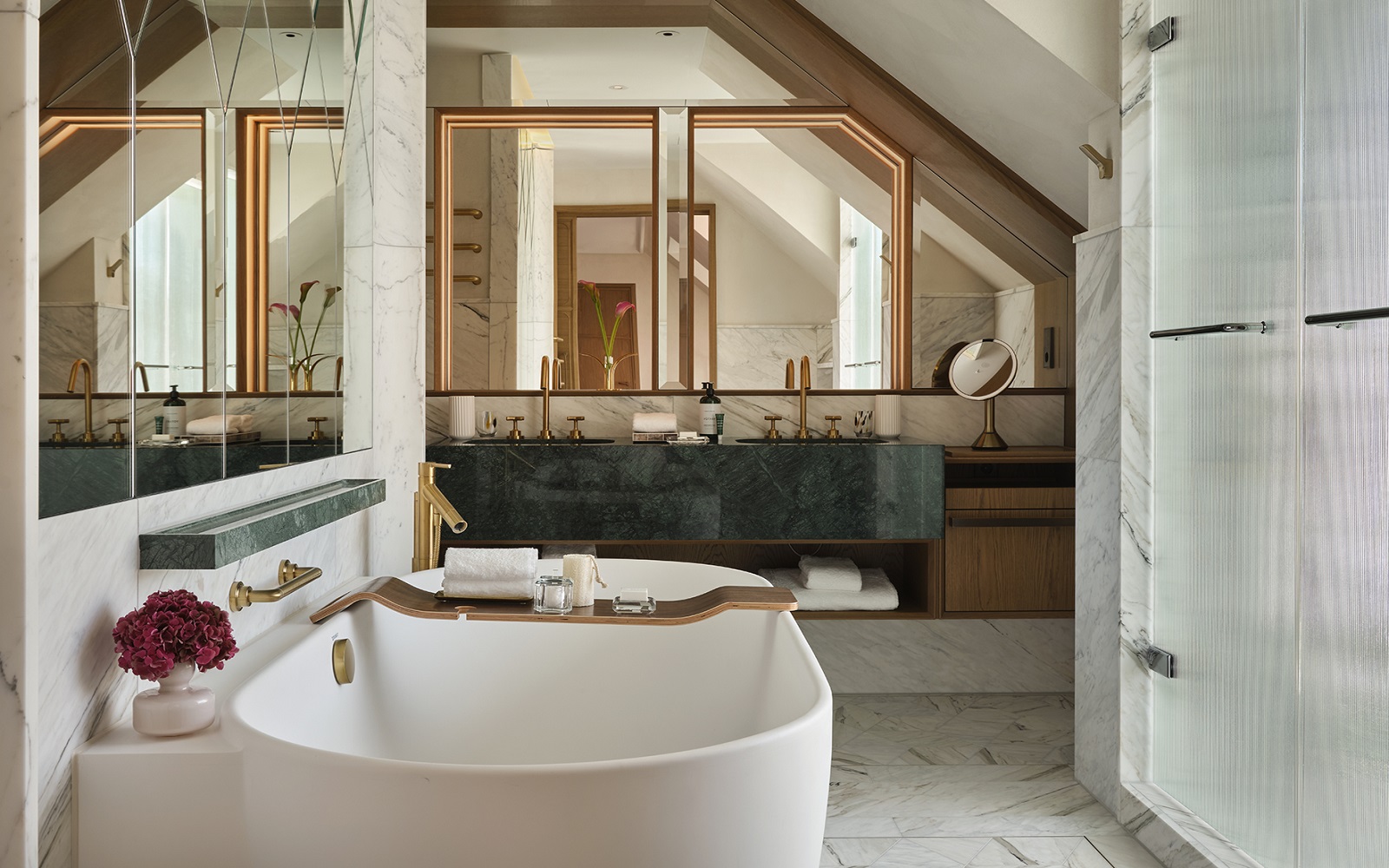
Image caption: Bathroom inside Rosewood Munich, designed by Tara Bernerd & Partners. | Image credit: Rosewood Hotels & Resorts
Hamish Kilburn: What’s technology’s role in this conversation? How are bathrooms becoming more experiential due to tech?
SB: The worry with technology, particularly in the bathroom, is that technology evolves quickly and we are working on projects with the intention to shelter a long-lasting design scheme. Of course, it depends on the brands.
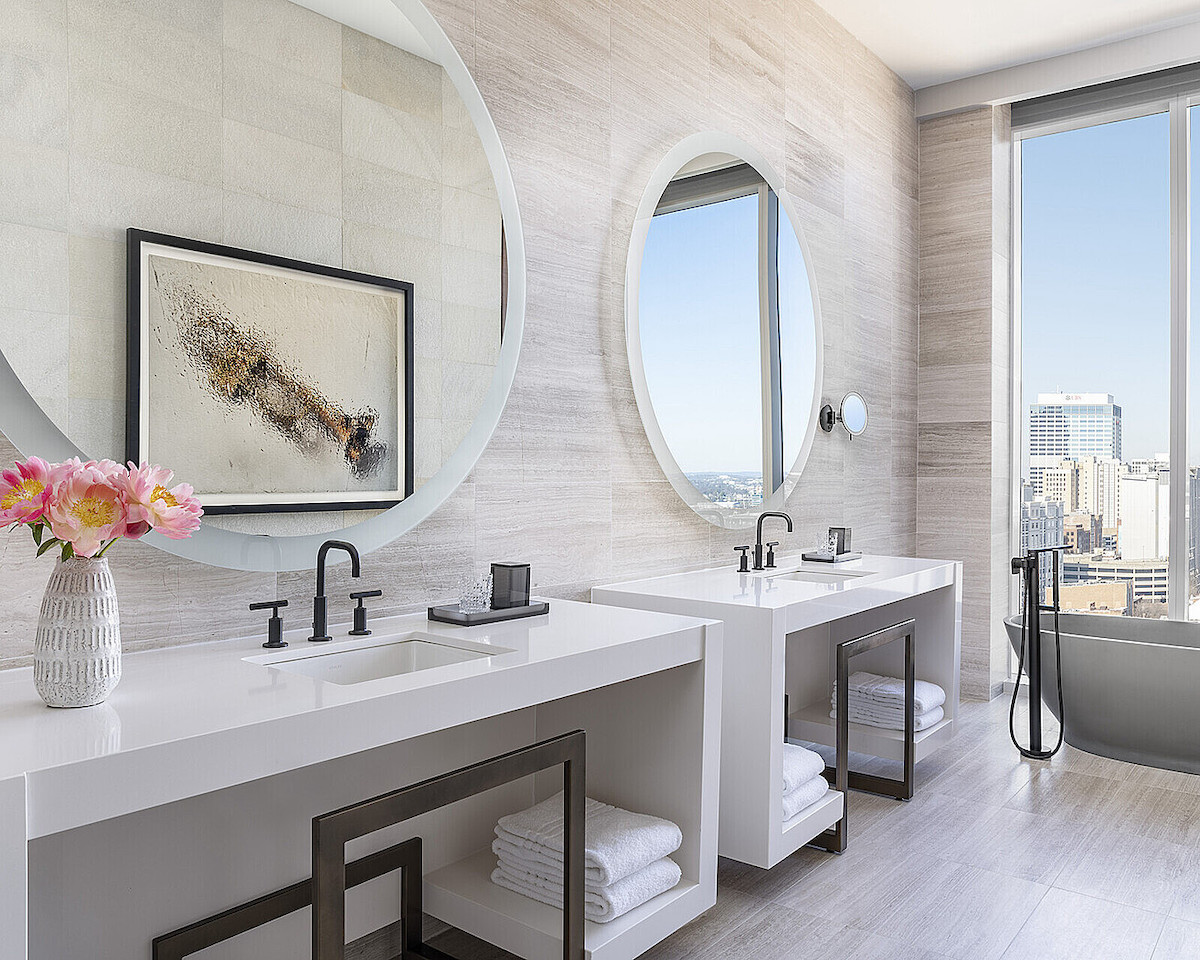
Image caption: Bathrooms inside Four Seasons Hotel Nashville, designed by HOK New York and Marizpan Miami. | Image credit: Four Seasons Hotels & Resorts
Corinna Galdies: I think it is still something we tend to prioritise for the larger suites, as a differentiator between the other rooms in the hotel. Sometimes we will have tech showers, for example, in the mock-up room, but they would usually be taken out and put in suites.
We have one project where the emphasis is on delivering something new that is technology-driven. On the other hand, we have projects that want us to focus on going back to the traditional ritual around bathing. Both are interesting, and we definitely learn from each project.
TT: Technological integration plays a pivotal role in blending the bathroom and bedroom. The sophistication of technology seen in the bedroom extends into the bathroom, exemplified by features like digital shower controls and integrated speakers. This tech-forward approach not only elevates the overall functionality of the room but also enriches the guest’s experience, making it both convenient and indulgent.
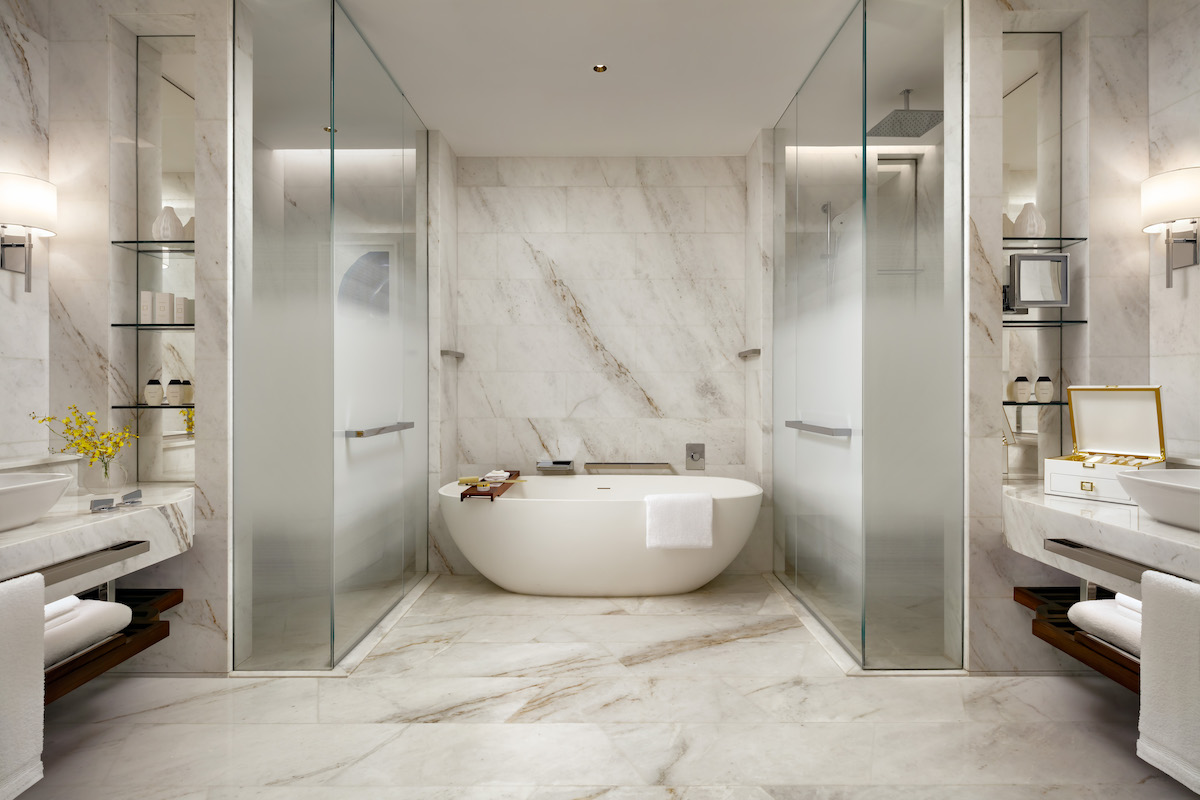
Image caption: Bathrooms inside Atlantis The Royal, designed by G.A Group. | Image credit: Kerzner International
MH: To be honest, I think there is a misconception around YOTEL that we are a very tech-heavy brand. We utilise technology throughout the guest experience, but we don’t want to fall into the trap of injecting technology in for tech’s sake. Our ethos is about simplicity and not over-complicating the design. For us, we would rather use technology on things behind the scenes like air quality control and updating the BMS systems.
Fiona Thompson: Within a guestroom, the bathroom is the most expensive part and it is the bit that you are not going to change. Over a 20-year lifespan, other than minor touches like lighting, the client is unlikely to change. Whereas in the bedroom, over the same time, there would have been, perhaps, two soft refurbs. You would change furniture and fabrics, but the bathroom is the one area that is so expensive that it won’t be changed. So, you have got to really think about the practicality of the materials and how long things are going to last.
We are doing a refurb on a project that we as a studio originally designed in the late ‘80s. We are not changing the taps and fittings because they are still really good quality. You have got to mindful, and whatever you do has to be relevant in years to come.
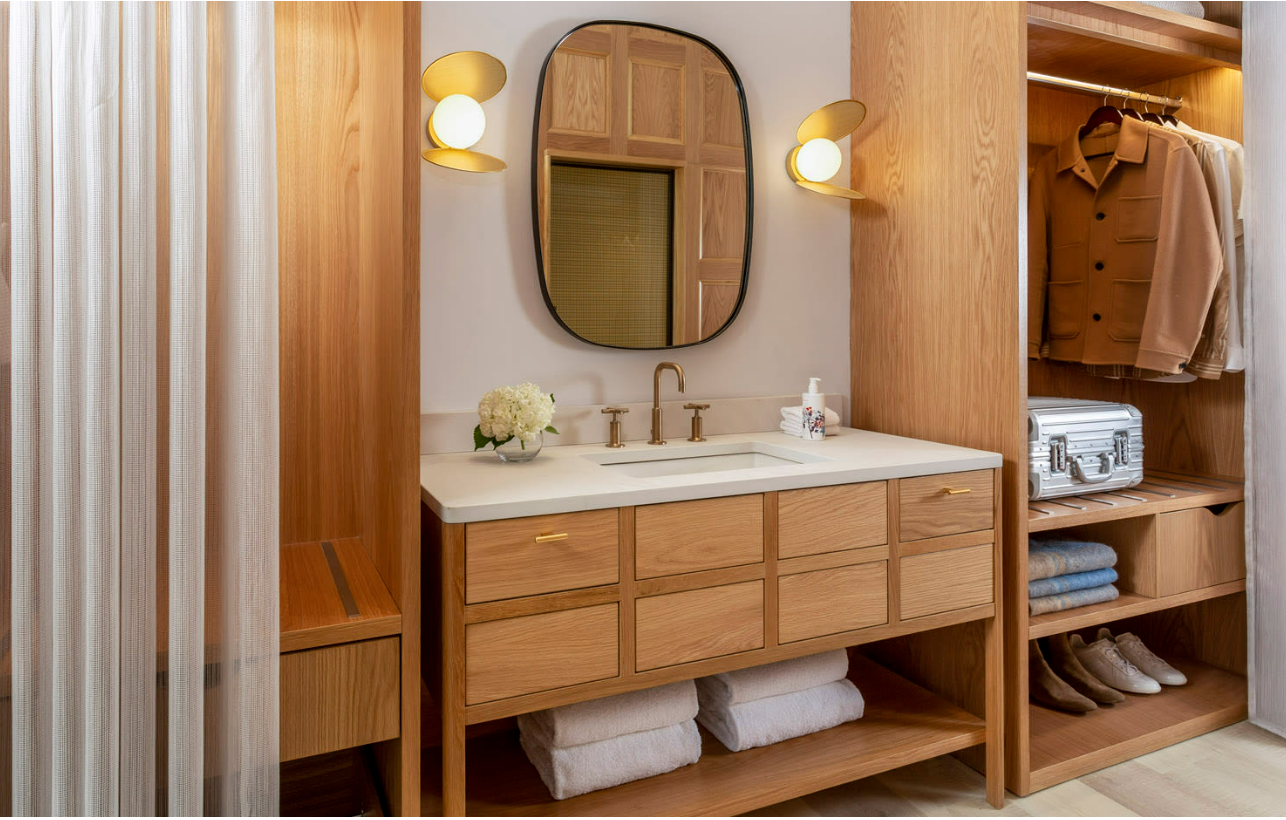
Image caption: Virgin Hotels Edinburgh, designed by ICA Studio, Four-by-two and Joelle Reid – bathrooms specified with Kohler products. | Image credit: Virgin Hotels
HK: This time last year, we were discussing tech’s role in bathroom design. Designers, at the time, were hesitant when injecting too much technology into the bathroom experience. Have there been any break-throughs with this conversation?
Kevin Miles: We, as a leading manufacturer, understand designers’ concerns around adding technology into the bathroom. Kohler has been making digital showers since before smart phones were released. We believe that, because people have become accustomed to using digital showers in their homes, they then expect this in the hotel experience. Through research and development, we have designed our products to be extremely user friendly – the interface features haptic response and iconography that everyone understands. Also, from a sustainability perspective, it tells you how much water you have used after each use. There’s also so much customisation features with smart showers, which we feel makes the concept more attractive for brands.
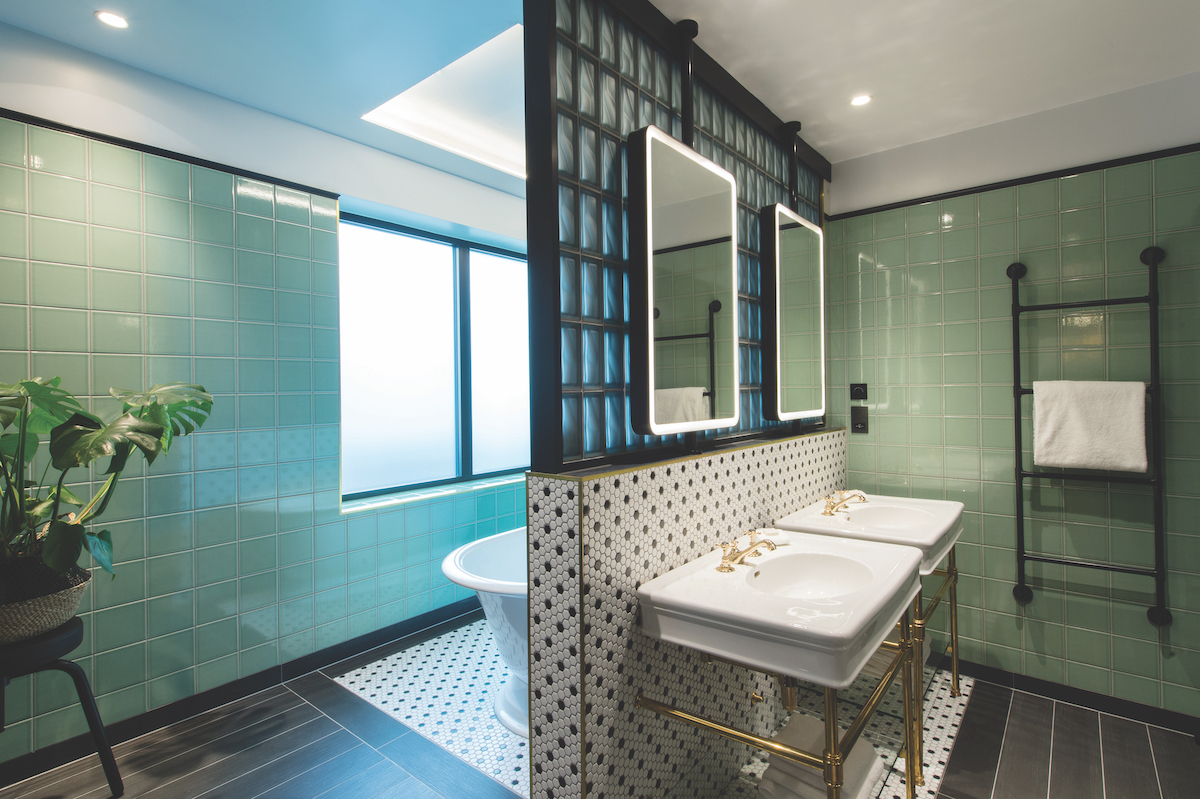
Image caption: Bathroom inside Clayton Hotel, London – designed by Studio Moren. | Image credit: Studio Moren
SB: I would love to walk into my shower and just to press one button and for the shower to immediately work around my preferences.
FT: I don’t mind adding technology into the hotel experience where it makes sense. I am constantly questioning how this piece of technology will make the design and the experience better. Having said that, I totally understand sustainability credentials.
TT: I think we do need to look at the longevity of these products. Going back to what you said, Fiona, about bathrooms having to stand the test of time, I wonder whether digital showers age faster. I know that the software can be updated, but tech in general does seem to have a shorter lifespan over something that is analogue.
> Since you’re here, why not read our roundtable with Kohler about tech’s role in bathroom design?
Main image caption: Bathroom inside Anantara Desaru Malaysia, designed by EDC Design







